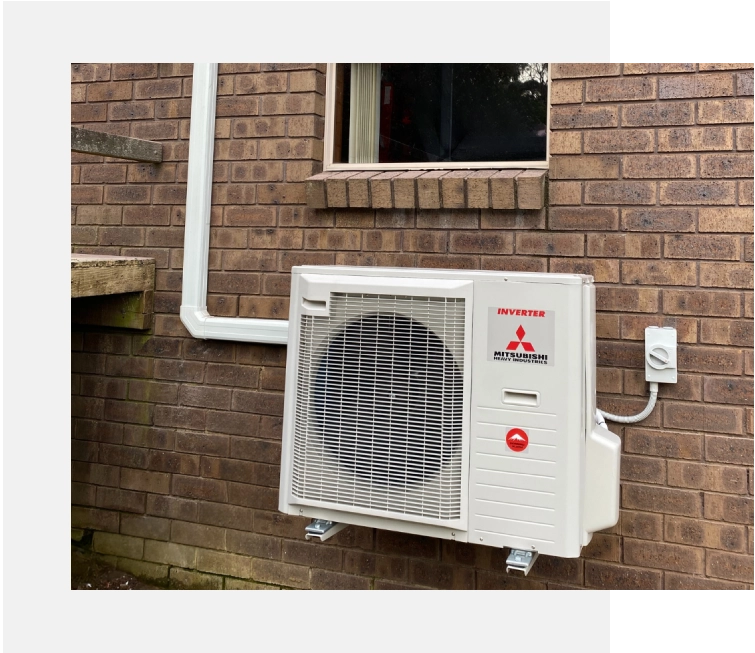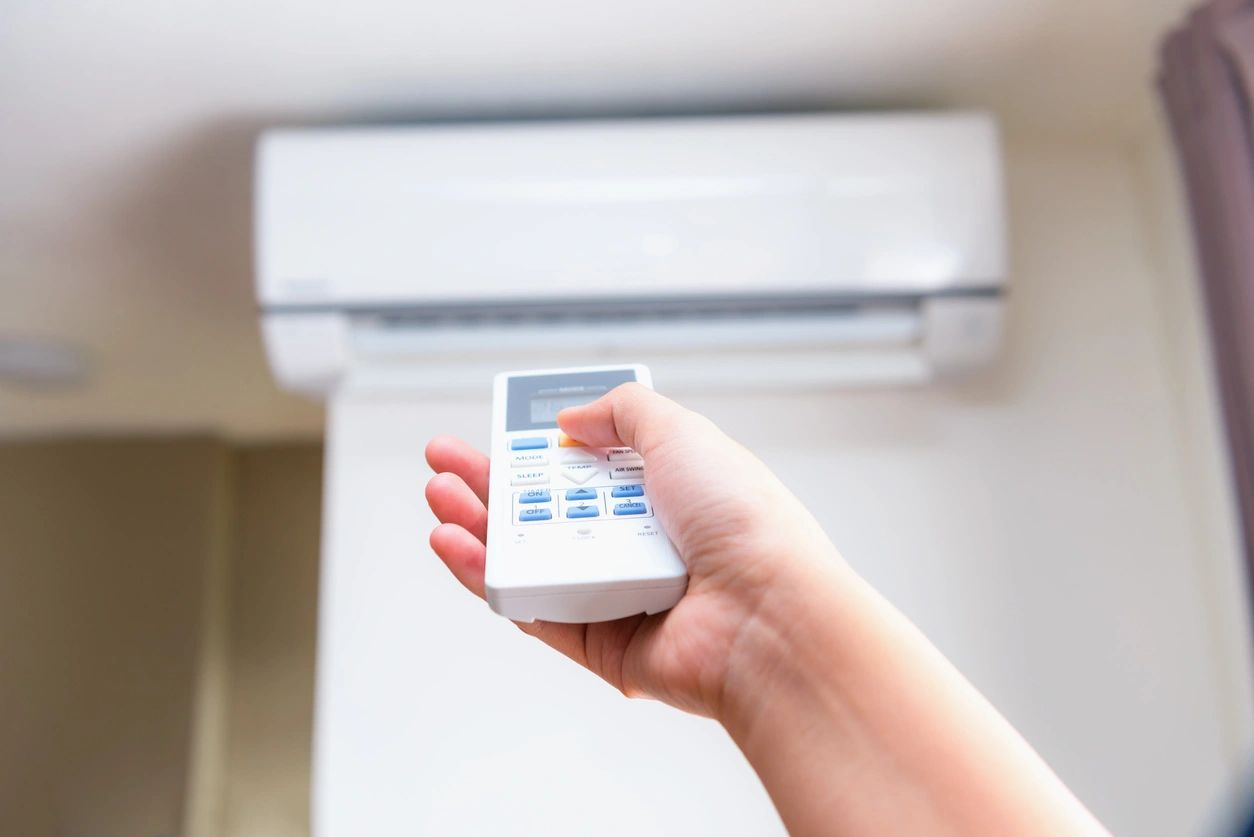
Heat Pump Warranty Information
Most heat pumps have a 5 years parts and labour warranty with the manufacturer where there is an issue or failure with a component. Warranties DO NOT cover components that have been damaged by a local electrical issue (network power spike, switchboard issue, customer accident, rodent damage, water damage from a burst water pipe, etc). A Condensate Pump (an optional third-party product that is installed where the inside heat pump unit is on an internal wall) has a 1-year warranty.
Recommended INITIAL Customer Actions
- Do a Hard Reset of the air con (turn off the isolator or circuit breaker in the switchboard for a full 15 minutes, then switch on again). Ensure that the circuit breaker at the switchboard hasn't tripped off due to an electrical issue.
- Ensure filters have been cleaned recently, and the condensate line isn't blocked (esp for ducted air con systems).
- If there is a water leak, burning smell, or electrical danger, then keep the power to the air con off.
Actions If the Issue Continues
For the fastest results, we suggest submitting a warranty inquiry directly with the manufacturer. Each manufacturer has one or two nominated warranty agents in each local area that have special training for error diagnostics with their particular brand. Here is the information that you will be required to collate:
- Brand and Model:
- Serial Number - outside unit:
- Serial Number - inside the unit:
- Error Code, if relevant. Sometimes this is displayed on the inside unit, the wired or remote controller, or appears as a sequence of flashing lights on the inside unit. With the flashing lights, many people record the lights for at least 10 to 15 seconds and then send them to the manufacturer so that it is accurately recorded.
- Photo or video of the issue e.g. damage, failed component, error code, etc. This depends on the nature of the issue.
- Installer: Home Efficiency Group (Sozpoz Ptd Ltd ABN 99 128 232 093), Tel 1300 968 060, License # 15606274, or nominated subcontractor.
Air Conditioning Brands and Warranty Form Details
- Fujitsu General
Fujitsu Warranty Information
Vic/Tas Support Number: 0395 435 899 - Haier Air Conditioning
To register a warranty job, go to support.haier.com.au/s/air-conditioner-service-request
Technical Support: 1300 729 918 - Mitsubishi Electric Air Conditioning
Warranty Form(Select Type=Technical/Service Support from the drop-down option) - Mitsubishi Heavy Industries (MHI) Air Conditioning
Warranty registration
Note: the manufacturer has preferred warranty agents that they nominate, so the selection of a warranty technician is out of our hands.
FAQ’s
Pricing for heat pump installations changes depending on:
- The Brand of the Unit
- The Heating and Cooling Capacity of the Unit
- The Difficulty of Install
- The Type of Mounting for the Outside Unit (Wall, Ground or Roof-Mounted Generally)
Troubleshooting
Defrost Mode
During the colder winter months, reverse cycle air conditioners will, at some point during the heating operation, perform a “Defrost Cycle”. Some owners feel that this is a fault because it isn’t heating as well as it should, but defrosting is a normal part of the heating operation and is not a fault with the product.

In heating operation, a reverse cycle air conditioner extracts heat from the air outside and transfers it inside your premises to warm it. Defrosting starts when the temperature of the outdoor heat exchanger becomes too low (around 0°C or below) and the moisture in the air starts to freeze on the outdoor unit’s heat exchanger. The sensors in the outdoor unit detect ice has started forming on the heat exchanger, and the system starts trying to remove this ice before it builds up. The indoor and outdoor fans will stop, but the compressor keeps running to melt the frost away. This mode continues until the temperature of the outdoor heat exchanger rises and the ice melts.
Any ice building up on the outside heat exchanger will reduce the airflow across the heat exchanger, which reduces the efficiency, the more ice build-up the more it is reduced. In extreme cases, this can also cause damage to the outdoor unit.
Inside you will notice the unit will stop heating, the indoor fan will stop and make some noise, and depending on the model there will be some form of visual indication such as a message on your wall control indicating heat standby or defrost. Outside, the outdoor fan will also have stopped, but the compressor will be running.
There are several factors that influence how often a unit will go into defrost mode. Some of these include, but aren’t limited to:
- The outdoor temperature and humidity.
- The amount of heating required.
- The condition and cleanliness of the system.
- The system has programmed logic to control how often defrosting can occur.
Generally, a unit could run for around 40 minutes after starting up before a defrost can be initiated. From there, defrosts could occur approximately every 40 minutes if the temperature hasn’t risen.
There are many variables that affect the duration of a defrost cycle. As a general guide only, these factors could bring the unit out of a defrost cycle:
- If the sensors on the outdoor unit detect that the heat exchanger temperature has risen enough, the unit will stop defrosting and resume heating.
- If the sensors have not already stopped defrosting, the time a unit might be in the defrost cycle could be approximately 10 minutes, depending on conditions and model. This may be a little longer, depending on whether all the ice was removed during the previous defrost cycle.
- The model has changed out of heat. A mode other than “heating” has been selected.
Regular defrosting, or a lack of heat, could be caused by a number of factors:
- If the unit has operated like this since it was first installed, you may be operating it incorrectly, or it may be inadequately sized for the space it is trying to heat.
- The outdoor unit has been installed in a location with insufficient ventilation.
- The sensor may be in the wrong location.
Initially, you should consult your instruction manual to ensure you are operating the unit correctly. If this doesn’t remedy the problem, you should then consult your installer prior to contacting the manufacturer. They can assist you to ensure correct operation. It is important not to stop the unit before the defrost cycle has ended because if the unit is restarted shortly afterwards, efficiency will be reduced, and you may cause damage to the unit.
If defrosting has recently occurred, and you have serviced your air con recently, this may be an indication of a fault or maintenance required. You can perform some basic maintenance yourself by cleaning the filters on your indoor unit, and ensuring that your outdoor unit is clear of foliage and the heat exchanger is not blocked. If this doesn’t remedy the problem, you should consult your installer prior to contacting the manufacturer.
- Keep your unit well maintained and ensure you are operating it correctly.
- Don’t have the thermostat set too high. The less load you place on the unit, the less frequently it will need to defrost in cold conditions.
- Ultimately, permanent fixes such as installing insulation in ceilings, walls, and under floors will help reduce your heating requirement (and save you money).
More immediately, keeping doors closed and curtains drawn will also help to reduce your heating requirements. Make sure there are no barriers erected around the outdoor unit. Raise the outdoor unit off the ground by at least 100 mm, by doing this the outdoor unit isn’t sitting in a pool of cold moist air.
